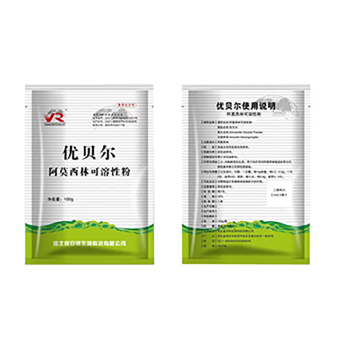- Afrikaans
- Albanian
- Amharic
- Arabic
- Armenian
- Azerbaijani
- Basque
- Belarusian
- Bengali
- Bosnian
- Bulgarian
- Catalan
- Cebuano
- Corsican
- Croatian
- Czech
- Danish
- Dutch
- English
- Esperanto
- Estonian
- Finnish
- French
- Frisian
- Galician
- Georgian
- German
- Greek
- Gujarati
- Haitian Creole
- hausa
- hawaiian
- Hebrew
- Hindi
- Miao
- Hungarian
- Icelandic
- igbo
- Indonesian
- irish
- Italian
- Japanese
- Javanese
- Kannada
- kazakh
- Khmer
- Rwandese
- Korean
- Kurdish
- Kyrgyz
- Lao
- Latin
- Latvian
- Lithuanian
- Luxembourgish
- Macedonian
- Malgashi
- Malay
- Malayalam
- Maltese
- Maori
- Marathi
- Mongolian
- Myanmar
- Nepali
- Norwegian
- Norwegian
- Occitan
- Pashto
- Persian
- Polish
- Portuguese
- Punjabi
- Romanian
- Russian
- Samoan
- Scottish Gaelic
- Serbian
- Sesotho
- Shona
- Sindhi
- Sinhala
- Slovak
- Slovenian
- Somali
- Spanish
- Sundanese
- Swahili
- Swedish
- Tagalog
- Tajik
- Tamil
- Tatar
- Telugu
- Thai
- Turkish
- Turkmen
- Ukrainian
- Urdu
- Uighur
- Uzbek
- Vietnamese
- Welsh
- Bantu
- Yiddish
- Yoruba
- Zulu
7 月 . 25, 2024 11:23 Back to list
Exploring the Efficacy and Applications of Gentamicin Sulfate in Modern Medical Treatments
The Role of Gentamicin Sulfate in Clinical Practice
Gentamicin sulfate is a widely used aminoglycoside antibiotic that plays a crucial role in the treatment of various bacterial infections. Discovered in the 1960s, it has become a staple in the medical community due to its effectiveness against a broad spectrum of gram-negative bacilli and certain gram-positive organisms. This article explores the mechanism of action, indications, potential side effects, and considerations for the use of gentamicin sulfate in clinical practice.
Mechanism of Action
Gentamicin sulfate operates by binding to the 30S ribosomal subunit of bacterial ribosomes, inhibiting protein synthesis. This disruption of protein manufacturing leads to the production of nonfunctional or toxic proteins, ultimately resulting in bacterial cell death. Its ability to penetrate the bacterial cell membrane makes it particularly effective against certain strains of Pseudomonas aeruginosa, Escherichia coli, and Klebsiella species.
Indications
The Role of Gentamicin Sulfate in Clinical Practice
In many cases, gentamicin sulfate is used in synergy with other antibiotics to enhance therapeutic outcomes. For instance, when combined with beta-lactam antibiotics, such as penicillins or cephalosporins, gentamicin can provide a broader coverage and improve efficacy against difficult-to-treat infections.
krim gentamicin sulfate

Side Effects and Considerations
Despite its effectiveness, the use of gentamicin sulfate is associated with potential side effects that clinicians must monitor closely. One of the most serious risks is nephrotoxicity, which can lead to acute kidney injury. This risk is heightened in patients with pre-existing renal impairment or those receiving concurrent nephrotoxic medications. Regular monitoring of renal function, including serum creatinine and urine output, is essential for early detection of renal complications.
Ototoxicity is another concern, particularly with prolonged use or high doses. It can manifest as hearing loss, balance disorders, or tinnitus, and in some cases, the effects may be irreversible. Patients, especially the elderly or those with pre-existing auditory deficits, should be counseled regarding these risks prior to starting treatment.
Additionally, gentamicin sulfate requires careful dose adjustment based on individual patient factors, including age, weight, renal function, and severity of infection. Therapeutic drug monitoring (TDM) is also recommended to ensure adequate drug levels while minimizing toxicity.
Conclusion
Gentamicin sulfate remains a vital antibiotic in the armamentarium against serious bacterial infections. Its ability to effectively target a wide range of pathogens, especially in combination with other antibiotics, underscores its importance in clinical practice. However, the potential for significant side effects necessitates vigilance in monitoring and patient management. As antibiotic resistance continues to challenge the healthcare system, understanding the therapeutic and safety profiles of medications like gentamicin sulfate is paramount for optimizing patient outcomes and preserving the efficacy of existing antibiotics.
-
The Power of Radix Isatidis Extract for Your Health and Wellness
NewsOct.29,2024
-
Neomycin Sulfate Soluble Powder: A Versatile Solution for Pet Health
NewsOct.29,2024
-
Lincomycin Hydrochloride Soluble Powder – The Essential Solution
NewsOct.29,2024
-
Garamycin Gentamicin Sulfate for Effective Infection Control
NewsOct.29,2024
-
Doxycycline Hyclate Soluble Powder: Your Antibiotic Needs
NewsOct.29,2024
-
Tilmicosin Premix: The Ultimate Solution for Poultry Health
NewsOct.29,2024













